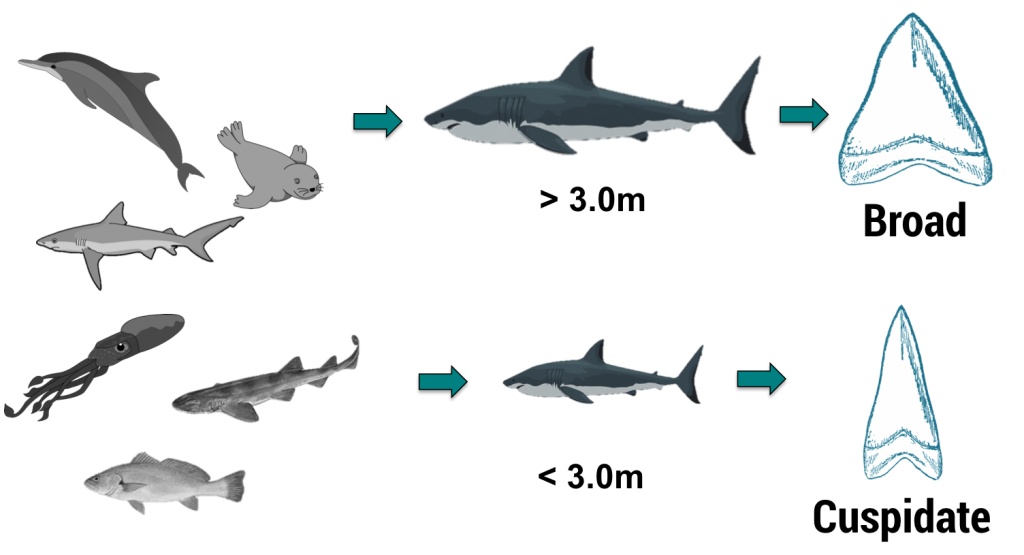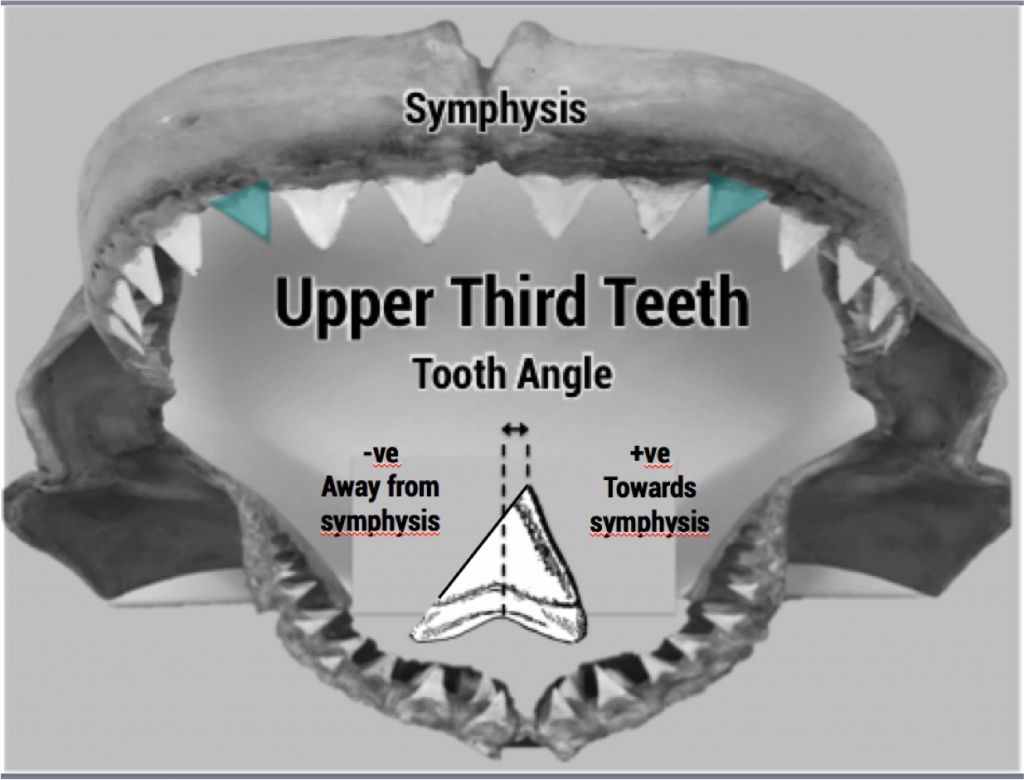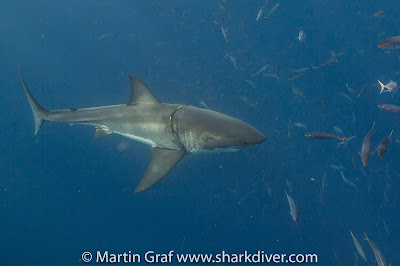
Why do sharks attack?
Recently there was another shark attack on a spear fisherman in California and a fatal shark bite at Cocos Island in Costa Rica. Inevitably when someone gets bitten by a shark, there is speculation about why it happened. “Mistaken identity” is a popular explanation, and of course the people arguing “it’s their home” and the “fill in the blank” kills more people than sharks every year are always ready to chime in.
There are statistics on shark bites, like the “international shark attack files” by the Florida Museum of Natural History, and we have a pretty good idea of how many people actually get bitten by sharks each year. Most of those statistics only collect data on what happened and are recording the circumstances of the attack. Since in very few cases was the shark actually seen before it bit the victim, most of the information we have is only about what the victims were doing before they got bit. When we discount the provoked attacks, like someone pulling a nurse shark by the tail, a fisherman getting bit by a shark he hooked, or like in the case of the Manhattan Beach incident, a fishermen hooking a shark and pulling it through a group of swimmers, very little is known about what the sharks were doing prior to biting the victim.
Obviously I don’t know what those sharks were doing or thinking either, nor do I know what lead them to bite. I wasn’t there and don’t have any firsthand knowledge. What I do have is some first hand knowledge of how some of the shark species implicated in attacks on humans behave and how that behavior might determine why they attack.
I have been diving with and observing Great White Sharks for over 17 years at Guadalupe Island and been around Bull-, Tiger– and Hammerhead Sharks for more than 6. What I found is that there are a lot of misconceptions about how these animals behave. Probably the biggest mistake is that people think “A shark is a shark”, pretty much assuming they all behave the same way.
There are well over 400 species of sharks, with most of them absolutely harmless to humans. Think about it this way. We have the top 10 deadliest sharks list. With an average of fewer than 10 fatal shark bites worldwide each year, that means that if a species is listed as #10, it stands to reason that that species is responsible for fewer deaths than #1, it may in fact only be responsible for a death every 30-40 years. Most of the species responsible for deadly bites on humans are the Great White, Tiger and the Bull Shark.
So let’s take a look at a couple of those species.
Great White Shark
The Great White Shark is probably the most feared animal in the world. Movies like “Jaws” and the way the media reports any encounter with them have instilled fear into most people who contemplate going into the Ocean. The thinking that one drop of blood in the water will cause a huge frenzy and pretty much any shark within 10 miles will come and attack you is very common.
The reality looks a lot different. Did you know that Great White Sharks don’t “frenzy”. In 17 years of observing them, I have never seen a bunch of Great Whites buzzing around a food source or a prey animal. When we put tuna heads in the water, or back when we used chum to attract sharks, we sometimes have to wait for hours for a shark to approach the cages. We could see them swimming below, but even though there was fish blood and Tuna in the water, they would not come up. When multiple sharks are around a food source, they typically measure each other up in order to decide who gets first crack at the food, instead of a free for all frenzy.
If that measuring doesn’t settle it, the bigger shark tends to bite the smaller one to assert it’s dominance. It is only after the pecking order is established, that they go after the food. They give each other space, with the smaller ones only going for the food after the bigger shark is a safe distance away.

Another common belief is that Great White Sharks will attack just about anything, even if they don’t know what it is. My observations have actually shown that Great White Sharks are not only very cautious, but seem to be almost timid. For example, a couple of years ago, a beach towel fell overboard and 3 sharks came to investigate it. 2 of them jerked away and took off, like something was chasing them, while the 3rd shark kept approaching it, jerking away repeatedly, until I lost sight of both the towel and the shark. I don’t know if the shark eventually bit the towel to figure out what it was, but it clearly kept checking it out repeatedly, being very cautious in it’s approach. We have actually observed the same timidness in some sharks when they approached a Tuna head. They clearly smelled the tuna, but when it was pulled slightly when they approached, a lot of them jerked away and would not attempt to bite the tuna until the made several passes to inspect it.
Screaming Mimi, a subadult female Great White Shark swam by my go pro that I had on a 20ft. pole 3 times, coming really close and checking it out, before biting it on the 4th pass. Again, she didn’t just attack, she first checked out the go pro a few times, before she decided to take a bite at it.
Another interesting observation we made is that Great Whites attack a sea lion differently than a seal. If they are not biting their head off, the bite a seal in the butt, because seals swim with their rear fins, while they bite sea lions in the pectoral fins, which is the way they swim. So if Great Whites know the difference between a seal and a sea lion, I think it’s unlikely they would mistake a surfer for a turtle or a sea lion.
There is a general belief that if you are bleeding, a shark can smell your blood from miles away and will come and bite you. Did you know that the Great White Sharks can differentiate between the blood from different species of fish? There is a distinct difference in how they react when they smell tuna blood, vs. yellow tail blood. So if they can tell the difference between the blood from different fish, it stands to reason that they can tell the difference between human blood and the blood of a seal or fish. Instead of increasing the chance of an attack, I actually think that if you are bleeding you might be even safer. Since your blood is giving the shark a way to know what you are, it actually might prevent an investigatory bite.
So why do White Sharks attack? There are of course different reasons. In the case of the spear fishermen who got bit in California, I believe that the shark wanted the fish and is was not actually going for the diver. When we were spear fishing at Guadalupe Island, we always put the fish on our float and didn’t attach it to our body, so that if a shark wanted the fish, it would not come for us. With surfers and swimmers, since I don’t believe in the mistaken identity, I think that most bites were actually an investigation. After they checked out the victim for a while, they took a bite, trying to figure out what it is.
However, I don’t want to take away the possibility that some of the bites are actual predatory attacks. Bites on humans by Great White Sharks are extremely rare, and the number of actual predatory attacks even rarer. While Great Whites are not mindless killers, out to get us, they are apex predators and definitely not harmless pets. There is no need to fear these animals, but we have to respect them for what they are.
Bull Sharks
We all heard that Bull Sharks are the most aggressive, because they have more testosterone than any other shark. While the testosterone part may be true, it has nothing to do with them supposedly being aggressive. People mistake aggression with hunger. When a Bull Shark is hungry, it has to eat. Unless it finds some animal that is already dead, that means it has to hunt and kill something. That’s not aggression, that’s just simply feeding. Aggression is fighting for territory, dominance etc. and that is actually something that is strangely absent from my observations. In an environment, where up to 70 bull sharks were competing for food, I’ve seen multiple sharks go for a tuna head, without any of them biting the others to get to the food. It was very rare to see a Bull Shark with a bite mark on them, something that definitely can’t be said about White Sharks.

Something I found out in Fiji really surprised me. DaShark, told me that the Bull Sharks that are taking tuna heads offered by hand from a feeder, are not the same as the ones who go for the tuna heads dropped from a trash can. He even told me that sharks that take a tuna head from one particular feeder would not take it from a different feeder. I would have thought that as soon as the sharks smell and see the tuna, they would go for it and not be picky.

Bull Sharks don’t naturally hunt for prey that is human sized, but they do hunt in brackish water, where the visibility can be quite bad. That is also the place where a lot of humans are in the ocean. So I think it’s not the “fact” that they are aggressive and attack anything, but rather their proximity to humans that makes it more likely that they are implicated in an attack. When chasing fish, Bull Sharks are not stalking. They pretty much have to attack at full speed in order to get the fish. When they are hunting, specially around humans, it’s easily possible that a foot flashes in the middle of some fish and the shark bites it by mistake. Also while more common than bites by Great Whites, Bull Shark bites tend to be less severe.
So what does all this mean for anyone going into the ocean? First and foremost, think about the rarity of a shark bite. There are far greater dangers in the oceans than sharks. Currents, waves and heat strokes have killed more people in the ocean than sharks. You are also more likely to get hurt on the way to the Ocean, than by a shark in it. There are however some common sense things you can do though to reduce the extremely small chance of getting bit even further.
1. If you see a potentially dangerous shark, get out of the water while keeping your eyes on it. Since they are stalkers, they are unlikely to attack when they first notice you and since they like to ambush their prey, they are less likely to attack if they know that you see them.
2. Don’t swim at dusk and dawn, when sharks tend to be more active.
3. Avoid shiny jewelry, sharks hunting in shallow water might mistake that for a fish.
4. Don’t go spearfishing or surfing in an area known to have big predatory sharks. In some areas that depends on the time of year.
Again, to put everything into perspective. In California, some of the most famous surf spots are in an area that seasonally has adult White Sharks. The busiest time for surfing is before and after work, dusk and dawn, the time sharks are most likely to hunt. The surfers are on the surface of the water, the most dangerous place in the water, because these sharks tend to attack from below, yet with all that, in 100 years from 1900 to 2000, there were only about a dozen fatal shark attacks. That’s about one every 9 years and those happened all over California, not just the area where White Sharks aggregate.
Bull Sharks can not only swim in salt water, but can go from salt to brackish and even fresh water. That fact means that they tend to be in waters that are also frequented by humans, which naturally increases the chances of that species being implicated in an attack. With the ever growing number of people going into the water, we would expect the frequency of bites to go up every year, something that actually hasn’t happened.
When it comes to our fear of shark, I keep thinking of a quote by President Roosevelt that says: “the only thing we have to fear is…fear itself”.
Go out and enjoy the Ocean. And if you want to observe these awesome animals yourself, let’s go shark diving!
Cheers,
Martin Graf
CEO Shark Diver
About Shark Diver. As a global leader in commercial shark diving and conservation initiatives Shark Diver has spent the past decade engaged for sharks around the world. Our blog highlights all aspects of both of these dynamic and shifting worlds. You can reach us directly at crew@sharkdiver.com.













